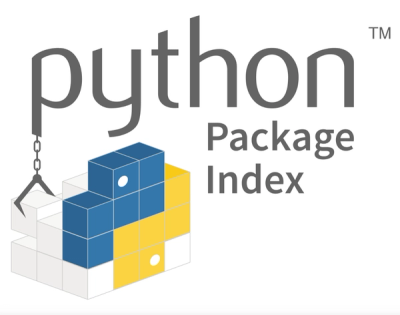jardin
Jardin is a pandas.DataFrame-based ORM for Python applications.
Getting started
In your working directory (the root of your app), create a file named
jardin_conf.py:
.. code:: python
# jardin_conf.py
DATABASES = {
'my_first_database': 'https://username:password@database.url:port',
'my_second_database': 'https://username:password@database.url:port'
}
LOG_LEVEL = logging.DEBUG
WATERMARK = 'My Great App'
Then, in your app, say you have a table called users:
.. code:: python
# app.py
import jardin
class User(jardin.Model):
db_names = {'read': 'my_first_database', 'write': 'my_second_database'}
In the console:
.. code:: python
>>> from app import Users
>>> users = User.last(4)
# /* My Great App */ SELECT * FROM users ORDER BY u.created_at DESC LIMIT 4;
>>> users
id name email ...
0 John john@beatl.es ...
1 Paul paul@beatl.es ...
2 George george@beatl.es ...
3 Ringo ringo@beatl.es ...
The resulting object is a pandas dataframe:
.. code:: python
>>> import pandas
>>> isinstance(users, pandas.DataFrame)
True
>>> isinstance(users, jardin.Collection)
True
Queries
SELECT queries
Here is the basic syntax to select records from the database
.. code:: python
>>> users = User.select(select = ['id', 'name'], where = {'email': 'paul@beatl.es'},
order = 'id ASC', limit = 1)
# /* My Great App */ SELECT u.id, u.name FROM users u WHERE u.email = 'paul@beatl.es' ORDER BY u.id ASC LIMIT 1;
>>> users
id name
1 Paul
Arguments
^^^^^^^^^
- ``select`` – The list of columns to return. If not provided, all
columns will be returned.
- ``where`` – conditions. Many different formats can be used to provide
conditions. See `docs <#where-argument>`__.
- ``inner_join``, ``left_join`` – List of tables to join with their
join condition. Can also be a list of classes if the appropriate
associations have been declared. See
`docs <#inner_join-left_join-arguments>`__.
- ``order`` – order clause
- ``limit`` – limit clause
- ``group`` – grouping clause
- ``scopes`` – list of pre-defined scopes. See docs.
``where`` argument
''''''''''''''''''
Here are the different ways to feed a condition clause to a query. \*
``where = "name = 'John'"`` \* ``where = {'name': 'John'}`` \*
``where = {'id': (0, 3)}`` – selects where ``id`` is between 0 and 3 \*
``where = {'id': [0, 1, 2]}`` – selects where ``id`` is in the array \*
``where = [{'id': (0, 10), 'instrument': 'drums'}, ["created_at > %(created_at)s", {'created_at': '1963-03-22'}]]``
``inner_join``, ``left_join`` arguments
'''''''''''''''''''''''''''''''''''''''
The simplest way to join another table is as follows
.. code:: python
>>> User.select(inner_join = ["instruments i ON i.id = u.instrument_id"])
If you have configured your models associations, see
`here <#associations>`__, you can simply pass the class as argument:
.. code:: python
>>> User.select(inner_join = [Instruments])
Individual record selection
^^^^^^^^^^^^^^^^^^^^^^^^^^^
You can also look-up a single record by id:
.. code:: python
>>> User.find(1)
# /* My Great App */ SELECT * FROM users u WHERE u.id = 1;
{'id': 1, 'name': 'Paul', 'email': 'paul@beatl.es', ...}
Note that the returned object is a ``Record`` object which allows you to
access attributes in those way:
.. code:: python
>>> user['name']
Paul
>>> user.name
Paul
INSERT queries
.. code:: python
>>> user = User.insert(name = 'Pete', email = 'pete@beatl.es')
# /* My Great App */ INSERT INTO users (name, email) VALUES ('Pete', 'pete@beatl.es') RETURNING id;
# /* My Great App */ SELECT u.* FROM users WHERE u.id = 4;
>>> user
id name email
4 Pete pete@beatl.es
UPDATE queries
.. code:: python
>>> users = User.update(values = {'hair': 'long'}, where = {'name': 'John'})
# /* My Great App */ UPDATE users u SET (u.hair) = ('long') WHERE u.name = 'John' RETURNING id;
# /* My Great App */ SELECT * FROM users u WHERE u.name = 'John';
DELETE queries
.. code:: python
>>> User.delete(where = {'id': 1})
# /* My Great App */ DELETE FROM users u WHERE u.id = 1;
Associations
It is possible to define associations between models. For example, if
each user has multiple instruments:
.. code:: python
# app.py
import jardin
class MyModel(jardin.Model):
db_names = {'read': 'my_first_database', 'write': 'my_second_database'}
class Instrument(MyModel):
belongs_to = {'users': 'user_id'}
class User(MyModel):
has_many = [Instruments]
and then you can query the associated records:
.. code:: python
>>> users = User.select()
# /* My Great App */ SELECT * FROM users u;
>>> instruments = users.instruments()
# /* My Great App */ SELECT * FROM instruments i WHERE i.id IN (0, 1, ...);
Or you can declare joins more easily
.. code:: python
>>> users = User.select(inner_join = [Instruments])
Scopes
Queries conditions can be generalized across your app:
.. code:: python
# app.py
class User(jardin.Model):
scopes = {
'alive': {'name': ['Paul', 'Ringo']},
'guitarists': {'name': ['John', 'George']}
}
The key is the name of the scope, and the value is the conditions to be
applied. Anything that can be fed to the where argument of
Model#select can be used to define a scope.
Use them as such:
.. code:: python
>>> users = User.select(scopes = ['alive'], ...)
# /* My Great App */ SELECT * FROM users u WHERE u.name IN ('Paul', 'Ringo') AND ...;
Misc
Caching
Jardin implements a LRU caching mechanism for the ``jardin.query`` method.
Setup
^^^^^^^^^
To confgure, add in ``jardin_conf.py``.
.. code:: python
# jardin_conf.py
# to configure cache methods:
CACHE = {
'methods' : {
'disk': {
'dir': <path to cache directory>, # default to `/tmp/jardin_cache`
'limit': 100000, # maximum size in bytes of cached files. when size of cache is above limit, files are deleted based on LRU # default to None
},
's3': {
'bucket_name': <bucket name>,
'path': <path>, # subfolder path where all cached files will be placed
'delete_expired_files': False # default is False
}
},
'method': <default method> # default to None
}
Methods supported
^^^^^^^^^^^^^^^^^^
- disk (files saved in ``feather`` format)
- S3
- memcached (coming soon)
Usage
^^^^^^^^^
Then, you can use it with:
.. code:: python
>>> df = jardin.query(sql, params, db="jardin_db", cache=True, ttl=10, cache_method="s3")
Watermark and trace
Multiple databases



